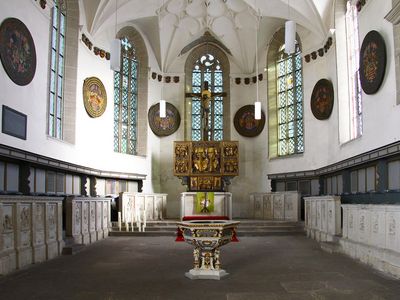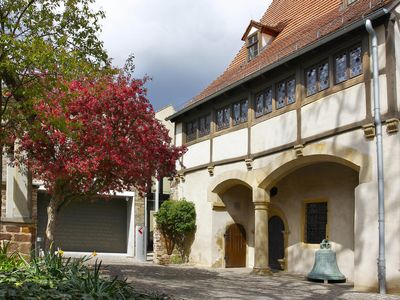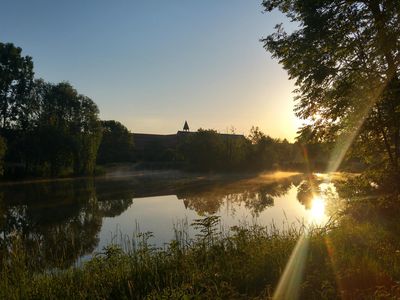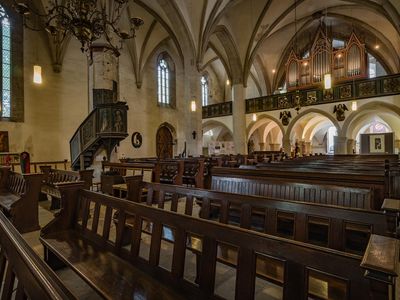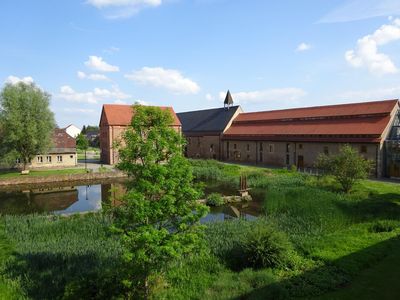The 1,000-year-old Lutherstadt Eisleben, located in the eastern foreland of the Harz and surrounded by the rolling hills of the Mansfeld Land, is the hometown of Martin Luther. The memory of the great German reformer is cherished by the town in the memorial sites, which belong to the UNESCO World Heritage.
The Luther Memorials include not only the birth and death house of Martin Luther but also the Churches St. Petri-Pauli, St. Andreas and St. Annen as well as the Luther monument on the market square. These sites are connected by the “Lutherweg Eisleben”, a walking routr with artistic stagings on issues related Luther.
The exhibition in Luther’s birth house takes place in 13 rooms and provides an interesting insight into the social conditions that influenced Luther’s childhood. The Baptistery St. Petri-Pauli is a late Gothic hall church with impressive columns and reticulated vaulting. The “Luthertaufstein (Luther’s Baptismal Font)” is located in the chancel and preserves the memory of Luther’s baptism. In the St. Andreas Church, Luther gave his four last sermons and led two pastors into their ministry. In addition, his dead body was laid out here before it was transferred to the Castle Church in Wittenberg. The Luther Memorial is a bronze sculpture and shows the reformer with a Bible in his left and a papal bull of excommunication in his right hand.
In addition to the Luther memorials, Eisleben has another visitor magnet in the form of the Cistercian monastery of St. Mary of Helfta, which lies on the scenic route 'Romanesque Road' and is the crown jewel of German nunneries.
The sites of copper slate mining, which was practised in the Mansfeld region for almost 800 years, the Eisleber Wiesenmarkt - the largest folk festival in central Germany - as well as numerous leisure activities and excursion destinations make a visit to the region an eventful one.

